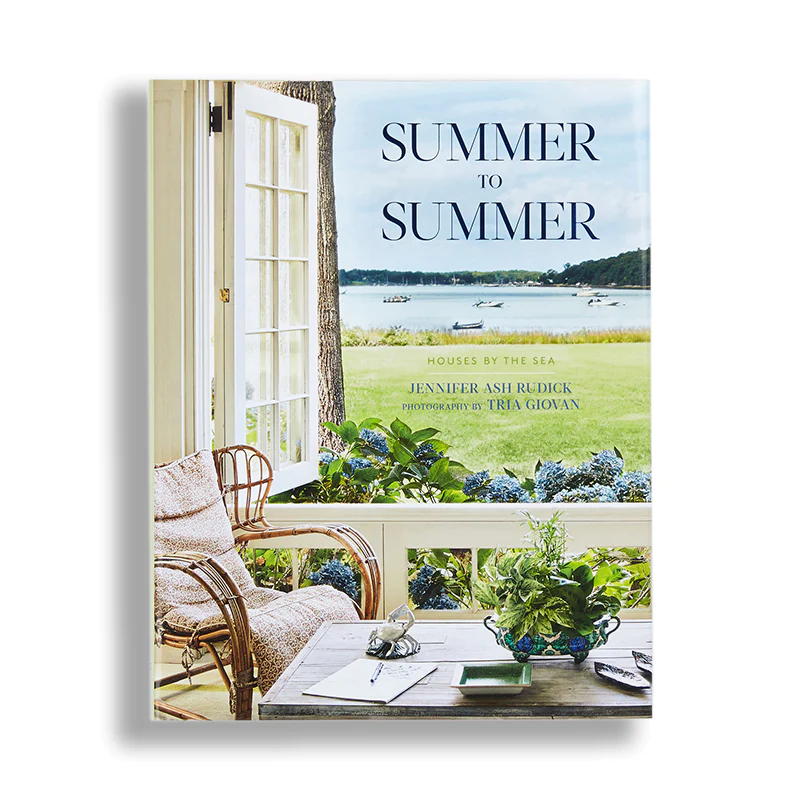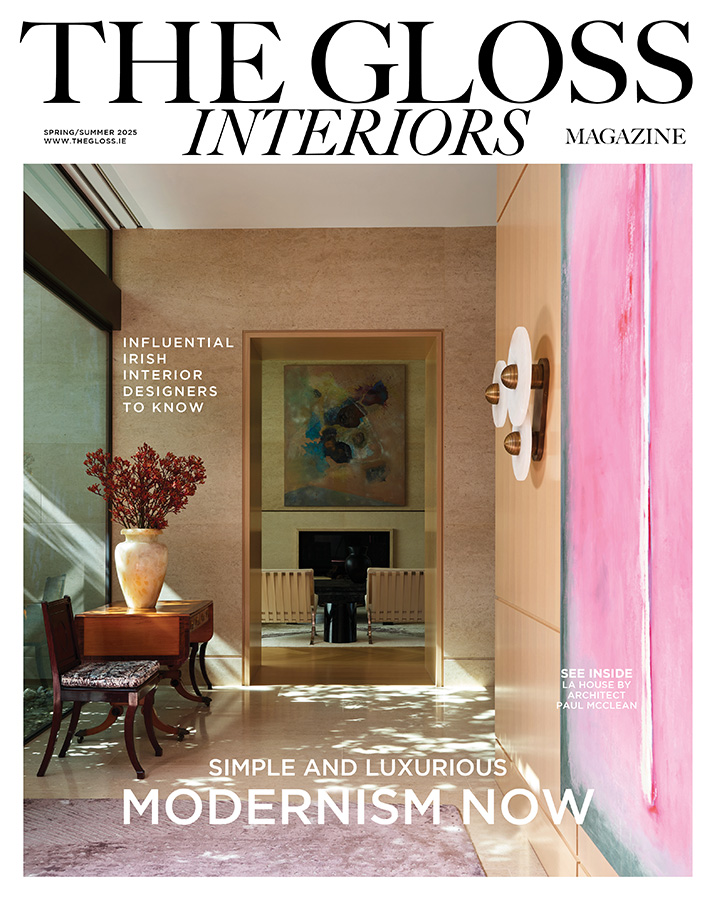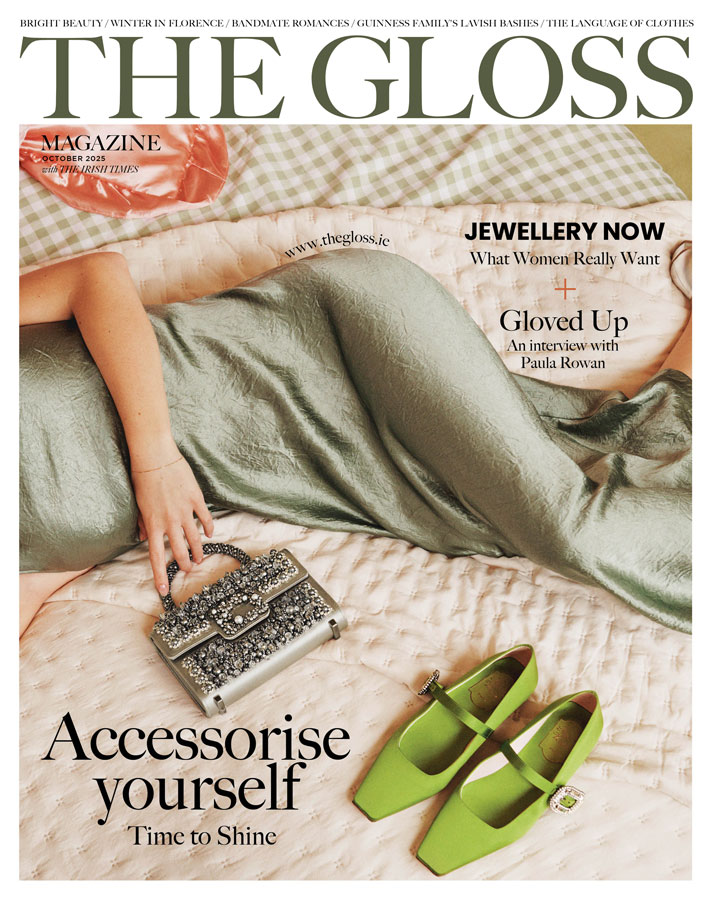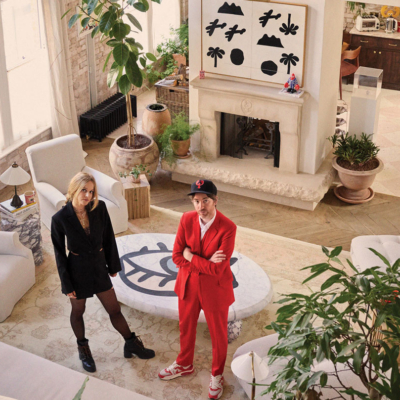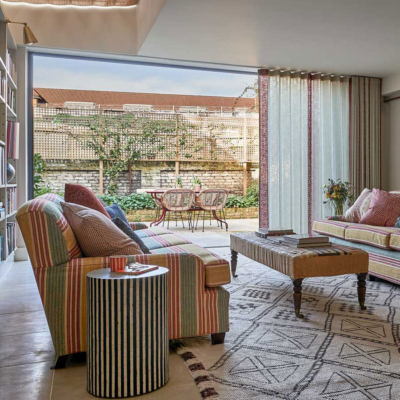Interior designer David Netto reimagined a tired hexagonal beach bungalow tucked into the dunes on New York’s Long Island …
There’s a contrarian pleasure associated with living in a bungalow on a stretch of beach otherwise lined with grand houses, a juxtaposition that perfectly suits interior designer David Netto, known for his eclectic interiors with subtle modernist undertones. Netto purchased the house on impulse when a google search for the “least expensive oceanfront house on eastern Long Island” turned up a decrepit hexagonal structure perilously balanced on stilts in a Napeague beach dune. “I was lucky, Liz really liked it,” he says referring to his wife, Elizabeth Netto, who is more enticed by communing with nature than by extravagant spaces.
After taking ownership, the family spent the next six years enjoying the beach, rather than tending to leaky roofs and sagging stairs. “I didn’t know what to do with the house, but I knew I didn’t want to tear it down because I wouldn’t be able to build on the dune crest again,” says Netto. The architect Will Meyer came for dinner one evening, and a conversation about how to improve the house turned into a dare. “I bet Will that there was really no way to make this house beautiful. He took pity on me and accepted the challenge.”
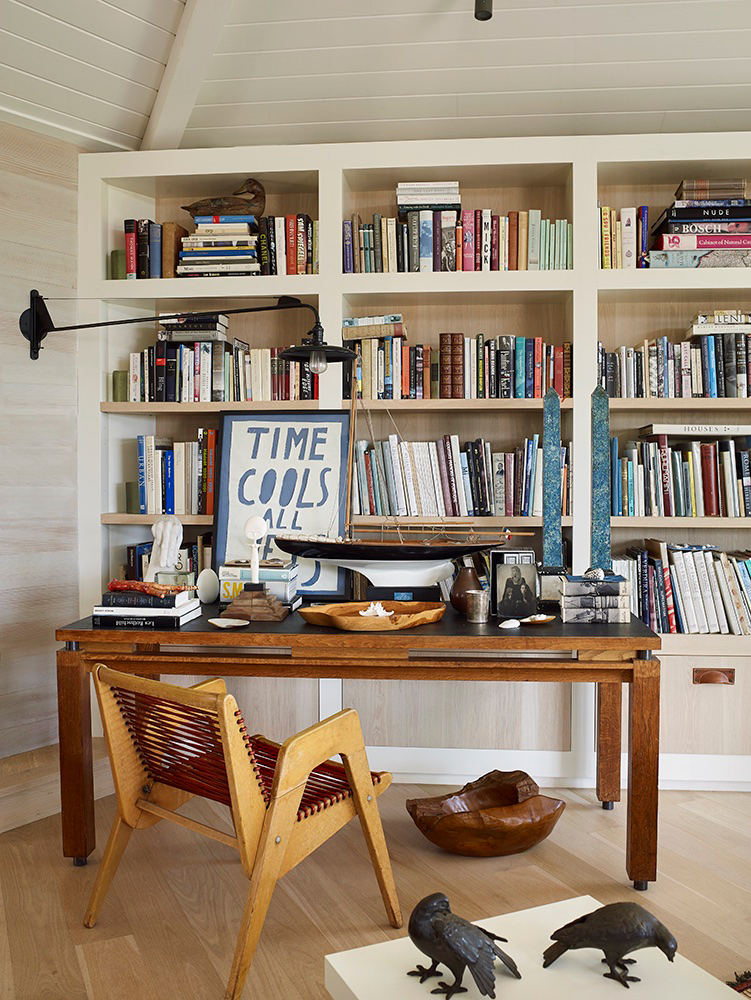
ABOVE: Netto’s desk, purchased in 1997, has been in every apartment he has lived in and is now a repository for children’s drawings and model boats. The lamp is by Atelier de Troupe. BELOW: Netto and Meyer envisioned the heart of the house as a wooden tent. The main living room is divided into living area and dining area. The window behind the fireplace reminds Netto of an aquarium. Whitewashed fir boards are used thoughout the house.
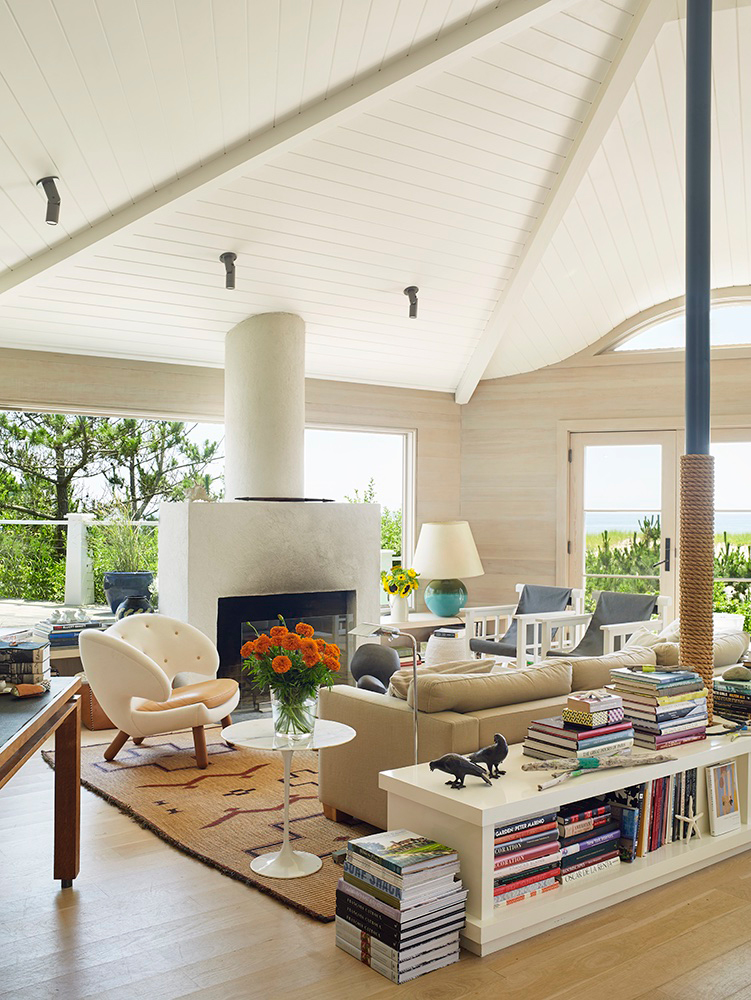
The house’s hexagonal shape prompted comparisons with a tent, so Netto and Meyer hit on a plan to tear down the main space’s interior walls, creating one great room with sliding glass doors that frame the ocean view. “The space is designed so you don’t really land anywhere. No matter what you put in there, it’s very hard to stop anyone from walking towards the ocean,” says Netto.
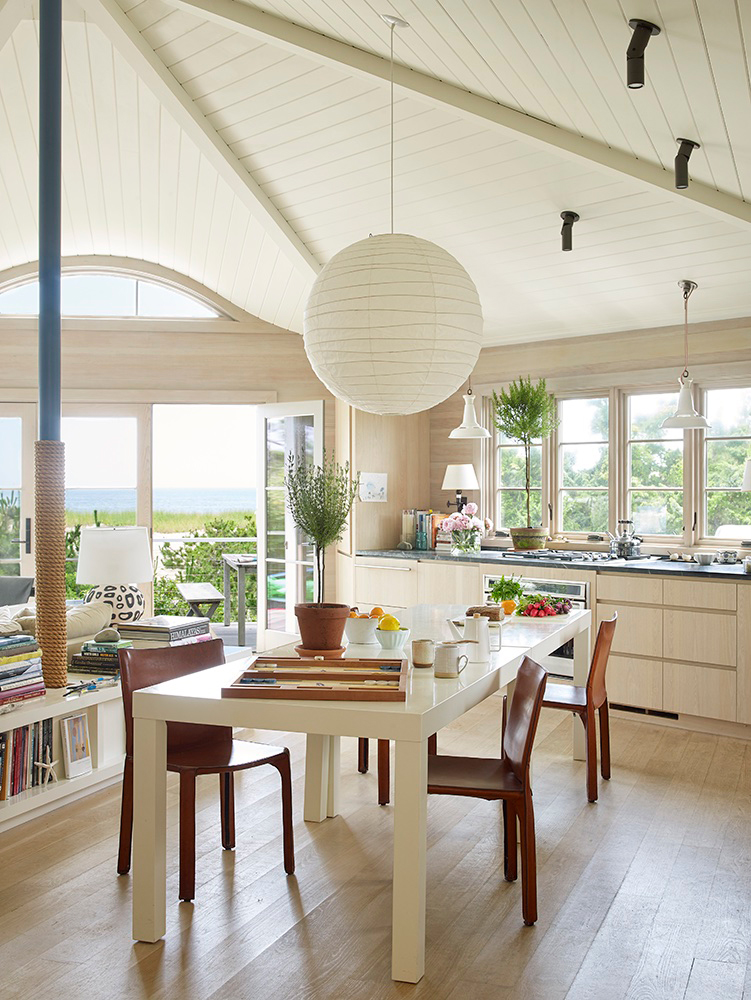
ABOVE: The dining table, which also serves as a countertop and homework surface was created by putting together two West Elm Parsons tables. BELOW In the bedroom hallway, a Simon Pearce sculpture sits on a West Elm table. Netto painted the bedroom doors in punchy colours for his daughters, Kate and Madelyn, choosing blue for the guest room.
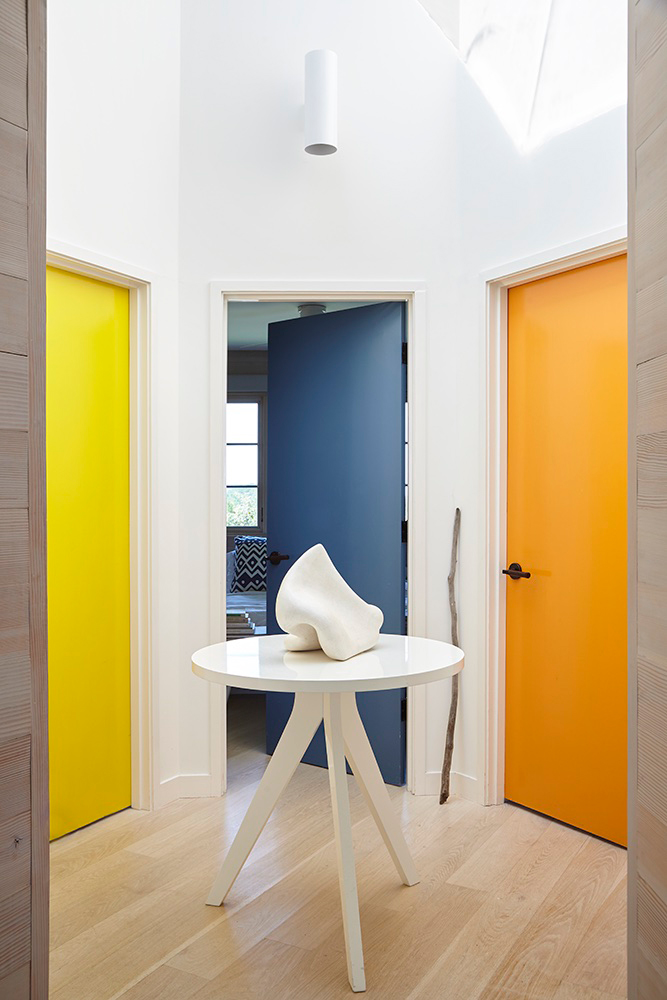
The same level contains a small bedroom wing with enticing colour-coded doors. “White for the bathroom and coat closet and three colours for the three bedrooms – left and right are my children’s rooms, so they get the fun colours of yellow and orange, and the centre is a sort of grownup blue that leads to the guest room,” Netto says. “I still remember the phone call my younger daughter, Madelyn, made to her sister, Kate, when she saw the house for the first time: ‘Kate! You have an orange door, and I have a yellow door!’ Success!”
To access the master bedroom, which is upstairs, one passes through Netto’s office, also used as a family room. “It’s not a big house, so we have to double up when it comes to function. Many people think of this as the TV room, but it’s also my office. When I finish something I just move from the desk to the sofa and reward myself by watching a movie.”
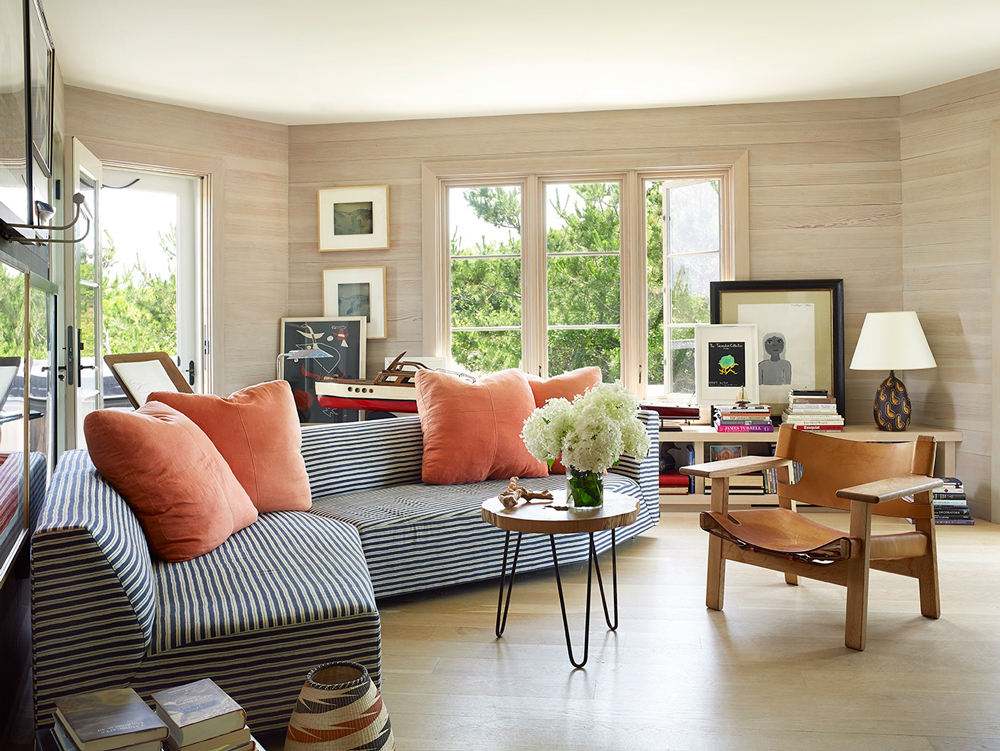
ABOVE: Netto embraced the hexagonal shape of his office by installing a boomerang-shaped sofa. An artwork by Konstantin Kakanias rests in front of a self-portrait by Netto’s daughter Madelyn. BELOW: The master bedroom is like a separate villa at the top of the house. The bathtub enjoys a view of the sea. A Louis XV-style chair by Gerald Bland, an Alexandre Noll sculpture and a Charlotte Perriand table and chair are an unlikely but successful mix.
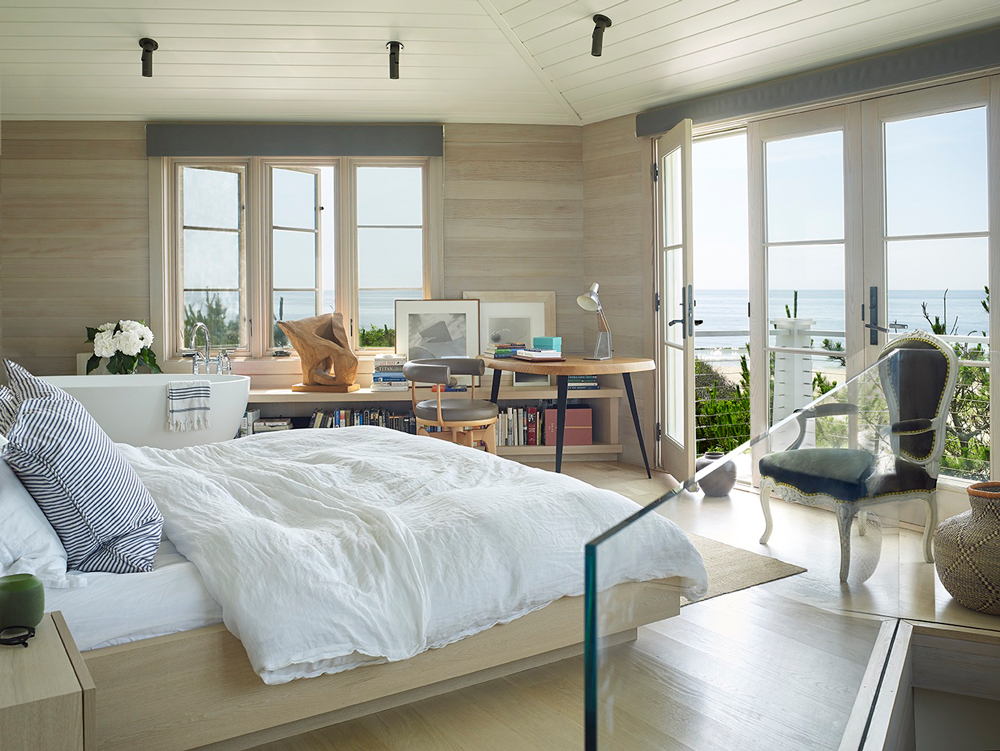
The master bedroom at the top of the house has sweeping views of the ocean and Napeague Bay. “You can see weather coming from the bay or the ocean. The house rocks a bit when the wind really gets going. And when a wave pounds ashore, you feel the shock coming up through the pilings.”
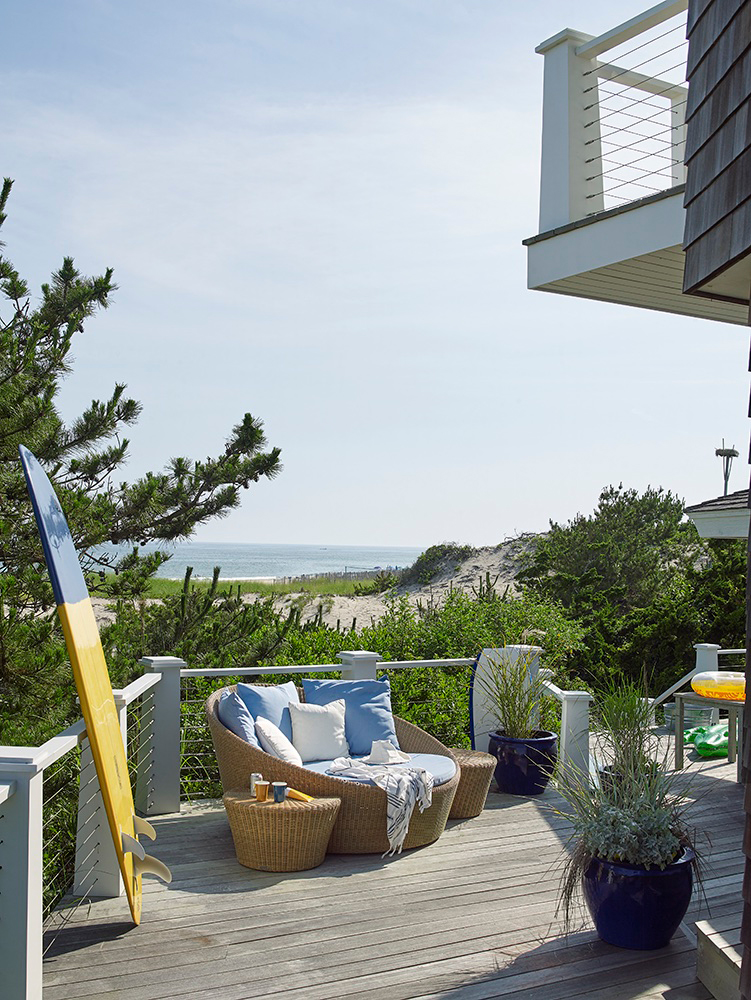
Despite the house’s sublime make-over, the true measure of its success is how well it works for his family. Though everyone has his or her favourite place to escape, it feels completely communal. People come and go freely and no one worries about sitting on this or putting a cup down on that. Thanks to its connection with nature, the family never loses sight that it’s a summer house – no more, no less – and the real star of the show remains the beach.
From Summer to Summer, Houses by the Sea, by Jennifer Ash Rudick, Vendome, out now. Photography: Tria Giovan.
